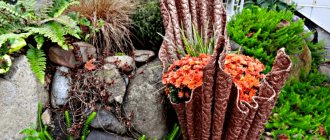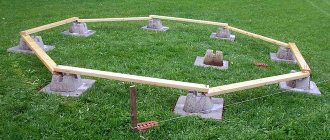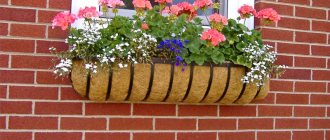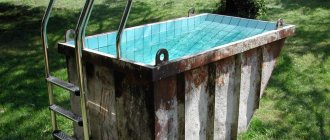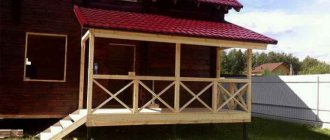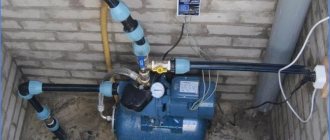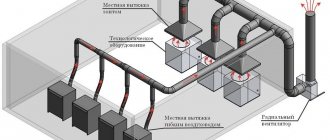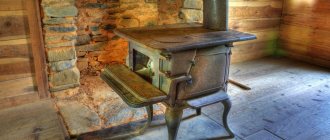In the private sector, every housewife tries to maintain cleanliness and order not only in the yard, but also in the garden, weed weeds, and plant each type of plant separately. And if you fence the beds with a beautiful fence, the garden will take on a neat and well-groomed appearance.
A creative approach to the manufacture and installation of fencing for garden beds will make them a decoration of the site.
Where to place the beds - choosing a location
Yields are influenced by many factors - soil quality, planting time, timely tillage, etc. In addition to the main points, the growth of crops depends on the chosen location on the site and the compatibility of vegetables.
It is necessary to choose a place for the beds simultaneously with planning the development of the site. The vegetable garden should be located in the most illuminated area, provided with irrigation. You should also take into account soil characteristics, climatic conditions in the region, and topography. In small areas it is appropriate to place raised beds with perennial plants. If you make them mobile, crops can be harvested in a warm place for the winter, preventing them from freezing.
Crops should be located taking into account their soil requirements. Cabbage, potatoes, cucumbers, and garlic should grow in a separate zone with constant nutrition of the earth. Carrots, onions, beets, and peppers are less demanding on the soil. Simple daily watering is sufficient for such vegetables. Bean beds do not require additional care. They can be placed in a shady place.
Pyramid
A new product that has recently appeared on gardeners’ plots. It is made from several boxes of different diameters, arranged according to the principle of a pyramid. It can also be a solid structure in the form of a pyramid with shelves on which plants are placed. It looks like a multi-faceted pyramid. Cucumbers, beans, and peas grow best on it. You can also grow greens, flowers, and herbs. Reviews from summer residents indicate that it is convenient to pick strawberries from such “pyramids.”
How to do it:
A pyramid is built from planks. The levels are then filled with earth. In this case, you need to start from the lower parts of the structure. After this, the soil is lightly compacted and the plants are planted.
Pros:
- space saving: pyramids are an ideal option for small areas where there is a shortage of land;
- beautiful appearance: a pyramid with vegetables and herbs, flowers and berries can become an aesthetic decoration of the site;
- purity of fruits: strawberries, cucumbers and beans do not lie on the ground, but hang from the shelves of the pyramid, therefore they always remain clean and attractive, and do not rot from contact with the ground.
Minuses:
- not every gardener can make such a design.
Types of beds
Keeping your garden in order is very easy. It is necessary to begin landscaping it by dividing it into separate zones - beds. This will make it easier to care for plants and make crop rotation possible. The place where crops are planted can be permanent or temporary. In unfavorable conditions, in arid climates, in small areas, the following types of beds can be used:
- Tall. The soil in raised beds warms up better due to the heating of the walls of the structure. The harvest does not depend on the quality of the land on the site, and weed control is reduced to a minimum. Vegetables can be planted several weeks earlier. Ripening is accelerated due to a special drainage system. The soil of high beds does not freeze and is protected from erosion during rain.
- Vertical. Used in small areas. The height of cascade structures is not limited. Compact beds will complement the landscape design of a private house and hide the shortcomings of unsightly buildings. You can care for crops in a vertical structure without experiencing physical discomfort. The beds are located at a convenient height. Plants get sick less and are not attacked by pests.
- French. Beautiful beds of regular shape with borders made of timber, boards, and bricks. Structures can be elevated or at ground level. The center of the composition is usually indicated by a small outdoor sculpture, a fountain. Branching paths divide the territory into symmetrical flower beds and rectangular areas.
- English. Gardeners add bright flowers to any planting of crops. The fencing is lavender bushes and various greenery. This option is not suitable for all crops. It is better to plant only perennial flowers in a homemade garden bed.
- Lazy. The most convenient compact structures, no more than 2 meters wide. A box is installed around the perimeter. The height of the structure and materials can be varied, depending on the type of crop. For the winter, you can make multi-layered beds in a greenhouse. You will need to install a pallet, rods and stretch the film. Fences prevent soil erosion and the growth of weeds.
- Smart. At low costs they allow you to get a large harvest. The method of growing crops involves the absence of annual digging of the soil. Self-made beds are fenced with sides in the yard, organic mulch and compost are laid on the surface of the ground. Organic matter retains heat for a long time and provides plants with essential nutrients.
- Warm. Multilayer beds filled with heterogeneous organic matter. The fuel, drainage layer is located at the very bottom. It is lined with branches, any tree. Subsequent layers are made from wet paper and grass. To maintain the functioning of microorganisms and nourish the soil, flower beds must be constantly watered.
Warm
A technologically warm bed is a variation of a compost heap. The bed is based on organic waste. Organic matter, when decomposing, releases heat necessary for plants. A good option for growing heat-loving plants such as cucumbers, tomatoes, peppers. In addition, the “filling” of such beds creates comfortable conditions for early spring planting. It can be buried, based on trenches, or raised - for areas where melt water stagnates in the spring or groundwater is too close.
How to do it: first, a box 100-120 cm high is constructed, the length is arbitrary. The inside of the box is laid in layers: cardboard, sand, large, coarse, long-rotting plant waste (sunflower stems, Jerusalem artichoke, corn), then foliage and compost are laid. The topmost layer is garden soil, at least 10 cm. After laying, each layer is spilled with water.
A warm trench bed is made according to the same principle, only instead of a box, a trench 40 cm deep is dug and filled with layers of organic matter:
- 1 layer – stems, paper, branches;
- 2nd layer – tops, rotten vegetables and fruits, sawdust, turf;
- 3 soi – leaves that have fallen from trees.
It is important to ensure that all plants, foliage, tops and fruits are free of diseases and pests, otherwise there is a risk of infecting future plantings.
A warm bed can be used for 4 years. Initially, it is oversaturated with nutrients, then their percentage decreases. Therefore, it is important to plant crops with different nutritional requirements in the garden every year:
- 1 year – pumpkin, zucchini, cucumber;
- 2nd year – cucumber, zucchini, cabbage, tomatoes;
- 3 year – cabbage, peppers, tomatoes, beans, lettuce, carrots, beets;
- 4th year – greens, peas.
Pros:
- requires minimal care;
- can be used for up to four years;
- recycling of garden waste for the benefit of the harvest.
Minuses:
- in tall boxes the earth dries out faster;
- warm trenches are not the most suitable option for places where groundwater is too close to the surface.
Benefits of raised beds
The main advantage is high productivity. For each specific crop, you can choose a special soil mixture. The beds warm up quickly due to their elevated location and the presence of fencing. Protection can be made from any available materials: brick, plastic bottles, wicker rattan, boards. Decorative fencing with natural plants is also allowed.
You can install beds in any area of the garden or vegetable garden, even rocky ones. A greenhouse effect can be created at any time. Fenced soil contains fewer pests and pathogens. The soil can be replaced at any time. Raised beds are very convenient for planting climbing perennials, such as strawberries.
Optimal size and shape of beds
Well-groomed beautiful beds not only increase productivity, but also make the site aesthetically pleasing. Tall structures should be of a convenient shape for cultivating the soil. Their width should not exceed 2 meters, otherwise there will be problems with weeding in the center of the bed. It will be most effective at a height of 15-50 centimeters. If the main soil is fertile, a height of 20 cm is sufficient. On soil unsuitable for farming, the bed is raised by 30 cm. Compost options can reach a height of 50 cm. This layout allows you to avoid bending in narrow openings when cultivating the soil.
On a high garden bed there should be enough space for plants, which are planted in two rows. This arrangement provides sufficient air and light for all crops. The length of the flowerbed can be any; restrictions are created only by the area of the plot itself and the possibility of drip irrigation.
How to choose garden border tape
Since using border strips you can create a wide variety of intricate flower beds, the choice of one model or another primarily depends on the purpose and how the structure is intended to be installed. The standard width of the strips is 10, 15, 20, 28 and 50 cm. If you plan to form stepped multi-tiered compositions, it is recommended to choose wider strips that penetrate better into the ground and hold the upper “floors”.
Among the manufacturers, German, Polish, Chinese and domestic companies prevail. Plastic garden border tape made in Poland and China has a texture that is too soft according to users. Because of this, the material does not hold the flowerbed well, and its boundaries gradually creep apart. Domestic analogues are famous for their general fragility and fragility. To ensure that the border for the beds lasts as long as possible and does not lose its aesthetic and strength qualities, it is recommended to choose German-made models with a reinforced edge.
Fencing materials and their features
This method is very popular and guarantees a bountiful harvest. The use of enclosing structures will solve many problems associated with the slow development of crops. A raised bed allows you to create individual conditions for each plant.
The box is usually made from strong, durable materials according to a preliminary design. The bottom is lined with metal mesh or plastic slats, following the instructions. This will minimize rodent attacks. A raised bed is easy to build with your own hands. To create tall structures with fertile soil, you can use wood, stone, metal, and plastic.
Tree
Wood does not have good contact with moisture, so it will not last long as a garden bed fencing. To avoid having to build a new structure next year, you must immediately select the right material. The best option is oak boards. Before starting work, they must be treated with an antiseptic solution. After drying, the frame is cut and prepared.
Install a high bed only in dry soil. At the selected location, the prepared boards are fastened with screws or nails, adjusting the desired height of the product. The center and corners can be strengthened with beams - this will significantly increase the strength of the structure. After all sides are deepened into the ground, the structure is leveled. It must be perfectly flat, otherwise moisture will accumulate in one place, which will lead to damage to the wood and crops.
Terrace board
The new technological material has a long service life. Boards made from a mixture of wood flour and plastic are used for the construction of any moisture-resistant structures in suburban construction. Decking beds can be influenced by any environmental factors. The material easily tolerates high humidity, heat, and frost. Its geometric shape does not change, and microorganisms do not show interest in it. Terrace boards are sold in a large assortment, different lengths, colors, with and without mounting fasteners.
You can assemble beds from a polymer composite of any size. It can be easily sawed with a hacksaw. Installation logs are used for connection. All parts are connected with galvanized screws and placed in the ground. Alignment is best done diagonally. To increase rigidity, the inner side of the structure must be equipped with additional columns in increments of 1 meter.
It is better to fasten the structure with galvanized screws, rather than black ones. You can make the installation process easier if you pre-drill holes for fasteners.
Stone and brick
Correctly selected material in color and size will fit into any landscape. You can make ordinary rectangular beds, oval, spiral-shaped buildings from natural stone or brick. Natural raw materials do not crumble or crumble. Among the disadvantages, one can note the large weight of the structure. A few years after installation, it begins to sink into the ground. The stone fence is dismantled, soil is added and rebuilt.
Raised beds can be decorated decoratively with any natural species. Suitable sandstone, basalt, pebbles, granite, limestone. The cobblestones are laid out in several levels on a prepared foundation and secured with cement mortar on the outside of the structure. The outer side should retain the “dry masonry” effect. The bottom of the bed must be covered with polyethylene, roofing felt and covered with earth. High beds made of bricks are full-fledged walls with cement mortar. It will not be possible to move a permanent structure to another location.
Plastic
This design can be purchased ready-made or assembled yourself. Lightweight plastic sides are practical and durable, and have a low cost. A polycarbonate fence retains 100% moisture in the soil when watering. The material is superior to stone, wood and metal in many respects.
Plastic for beds does not release toxic substances into the soil when heated. It does not attract insects and small rodents. It is not afraid of corrosion and rotting. You can make different types of beds from the following materials:
- Garden designer. A set of plastic parts with special fasteners allows you to create a fence of any shape, color and size;
- Border tape. When tensioned, the polymer fence takes the form of a side. Available in different widths (0.1 m – 0.5 m). You can make ordinary and multi-tiered flower beds from it. Disadvantage - cannot withstand heavy soil weight;
- Plastic mesh. Used for fencing flower beds and low beds. It is often used as an additional barrier;
- PVC panels. The structure is assembled using corner fasteners. To create raised beds, the panels need to be stacked on top of each other.
Metal
The metal bed is quick and easy to assemble. It can be put away in the barn for the winter and put in a new place in the spring. The leaf border is light in weight and has the ability to be connected in length and height. You can make high beds and small fences of any shape from metal. If desired, they can be painted in any color.
You can fence the garden bed with your own hands using a profiled sheet or roofing iron. It is also possible to galvanize a structure made of any material without any problems. You can create a practical and beautiful product by following the step-by-step steps of the following master class:
- Determine the size of the structure (flat, tiered);
- We prepare corner posts from timber;
- We make a frame structure from boards;
- We cut out metal pieces of the required size and attach them to the frame;
- We cover the burrs with a wooden frame.
Sheet metal should only be cut with scissors. You cannot use a grinder to speed up the process. Due to overheating, the polymer layer loses its protective properties. The cut will quickly rust.
Concrete
It is necessary to carefully select a location for a capital structure. High concrete beds cannot be moved to another site without disturbing the structure. Concrete fencing has similar characteristics to brick and stone products.
First of all, prepare the wooden formwork. The width of the mold for pouring must be at least 15 cm. It must have a tight fit at all points of the ground. Fill the leveled form with mortar and place the reinforcement. After complete drying, the formwork is removed and the bed is covered with earth.
Vine and twigs
For such a bed you will need the simplest and cheapest materials. It carries more of a decorative message than a practical one. The original version, unfortunately, is not durable. You can make a fence from bending rods linear or round.
Preparation of the material involves soaking the rods in water for a day. Then we distribute wooden pegs around the perimeter of the bed, giving it the desired shape. We place small branches in the center of the structure - they will serve as drainage, and we weave large and even ones between the stakes. The sides of the bed on the inside should be covered with agrofibre, preventing soil from spilling out through the cracks.
Slate
Slate beds are lightweight and mobile. The material does not deteriorate in a humid environment and from temperature changes. If necessary, damaged elements can be easily replaced. Cheap corrugated sheets can be purchased at any hardware store. Slate beds can have different shapes, harmoniously fitting into the overall design of the site. Disadvantages include the negative impact of asbestos cement on the soil and the absorption of moisture when overheated.
You can make fences for garden beds from flat slate sheets or wavy plates. Large sheets are bolted together using metal corners. Then the structure is placed in the prepared trench, soil is poured in, and compacted.
Finely cut corrugated plates can be installed lengthwise or crosswise. They are placed overlapping in a prepared, moistened trench and sprinkled with soil. They are reinforced with pegs on both sides.
Preparation
To ensure that the structure is rigid and does not deform over time, it is reinforced with wooden blocks or improvised metal elements (a channel, pieces of reinforcement, or a square pipe will do). In addition, you will need corners, screws to tighten the structure, or a welding machine. A drill or screwdriver is useful for attaching the corrugated sheet to the finished frame; it is secured with self-tapping screws.
All frame elements are painted to prevent rotting or corrosion of the metal. Cut corrugated sheets. The width of the structure is from 1 to 1.5 meters for ease of maintenance, the length is from 2 to 6 meters. With a long bed, transverse posts on the frame are fixed every 2 meters. The height of the sides is 30 centimeters. High beds are made when groundwater is close or for protection from domestic animals and birds. Cut the profiled sheets into strips of the required size.
Paths between the beds
Every gardener tries to use all means and possibilities to give the plot an aesthetic appearance and increase the yield. It is not very convenient to move on the ground between the beds, especially with working equipment and after rain. Therefore, the arrangement of paths plays an important role in the design of a village garden. In addition to physical convenience, there is no need for weeding. You can make the following tracks with your own hands:
- Wooden plank flooring;
- Permanent sidewalks made of crushed stone and broken bricks;
- Ribbons from old carpets.
Miniature vegetable garden of Natus
Such organization of space for growing greenery can be an excellent compromise between the desire to relax in the country and the desire to grow something with your own hands. Natusa arranged it this way: “The paths are laid with agrotex, and on top there is fine crushed stone - for the sixth year in perfect condition, no hassle. But this is more suitable for fenced beds.”
Rice. 1. Border tape prevents crushed stone from falling onto the beds. Photo by Natus .
Rice. 2. Color combinations of different green crops create a decorative effect. Photo by Natus .
Rice. 3. Despite the small size of the garden, there is enough space for everything: garlic, onions, lettuce, dill, parsley. Photo by Natus .
The disadvantage of decorating paths with crushed stone is the possibility of crushed stone getting into the operator of the lawn mower and into the lawn mower itself.
We build a high bed made of timber with our own hands
Most summer residents prefer to make high beds from timber. Natural material should be wide and dense, especially if the frame is multi-level. For vegetable crops, large structures are made, placing wood longitudinally. Beautiful flowers are planted in flowerbeds made of timber, placed vertically, in the form of stumps. Any bed made of wood must be lined from the inside with a material that insulates contact with the soil (iron, film, agrofibre).
Selection, marking and site preparation
Before starting to build a log bed, it is important to choose the right place. She should be in direct sunlight for at least 6 hours a day, preferably in the morning. If the structure will stand on a slope, it is better to place it across the slope. Raised beds, from 50 cm, require some effort during construction, which is compensated by ease of maintenance and a constantly favorable optimal temperature for crops.
The location of the future bed must be planned and marked with pegs. Boundaries can be defined by stretching a thread or fishing line between them. This marking method is suitable for outlines of any shape. The surface must be perfectly flat. If necessary, you need to remove the layer of soil. Preparing the site before installation work involves removing weeds. It is also necessary to dig up the soil and apply fertilizers.
Frame processing and assembly
The cut and prepared beams for the frame must be coated on all sides with antiseptic impregnation and drying oil. The lower part in contact with wet ground should be re-impregnated with used oil. All structural parts must be left in the sun and draft until completely dry.
The dried beams are knocked down in pairs to the desired size and connected using bars. The height of short and long products should be equal to the height of the bed. Structures of questionable reliability should be reinforced in several places with cross beams. The corner pegs should protrude at least 10 cm. The frame can be decorated from the outside with beautiful boards coated with varnish.
Filling the bed
In an empty wooden box, it is necessary to create favorable conditions for the rapid growth of plants. The bottom layer is covered with construction mesh. This will protect the plant roots from rodents. Warm multi-layer beds are filled using a certain technology. Heterogeneous organic matter alternates in layers as follows:
- Newsprint;
- Thick cardboard;
- Shrub chips, small logs;
- Chopped branches;
- Leaves;
- Compost;
- Fertile land.
In wet areas, a drainage layer will be useful. It is placed at the very bottom of the frame in front of newsprint and other future humus. For drainage, crushed stone, tree bark, clay shards, and expanded clay are used.
How to care for raised beds
Raised beds do not require frequent maintenance. In a favorable environment, plants practically do not get sick, and the growth of weeds is minimized. It is enough to renew the top layer of soil and compost once a year, in the spring, to reap a bountiful harvest in the fall. To retain moisture, the top of the bed must be mulched.
After harvesting, the soil must be loosened. You can use a pitchfork or shovel. At the end of the season, the ground can be covered with film or straw, or vegetable waste. This will protect it from freezing and weathering. In early spring, a raised bed can be used as a greenhouse. Onions, radishes, and cucumbers will take root well at this time.
Reasons for creating borders
Decorative borders can become part of the overall garden design. Combining different materials and colors will help create a bright composition and zone the area.
Reasons for creating a border:
- Simplifies maintenance (weeding, fertilizing), limits the area of weed growth.
- Preserves the fertile layer of the soil and reduces its weathering.
- Provides rational watering. Water goes directly to the roots of plants, rather than spreading to the sides.
- Blocks the path of pests to the beds. When the fence is buried in the ground, a kind of barrier is created against the penetration of pests from neighboring plants.
Material on the topic: all about pests.
- Restrains planting and proliferation of crops throughout the garden.
Bed borders complement the landscape design of the site and will help contain the spread of plants beyond the border - Strengthens loose soil, which is especially important on sandy soils.
- Promotes early harvest. Thanks to the sides, you can create a thermal bed by filling the space with organic matter. In such beds, the soil temperature is higher, and the crop ripens much faster.
The space between plantings remains clean, so the garden looks well-groomed.
In this video you will learn how to properly build a fence for a garden bed:

